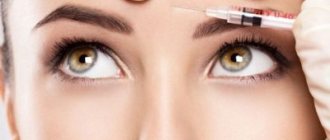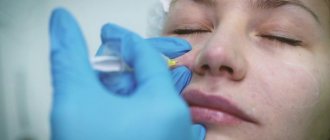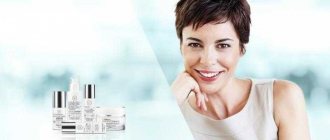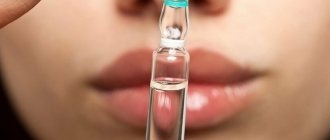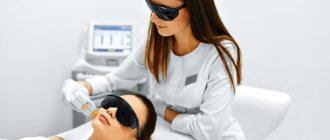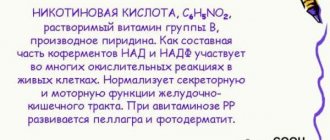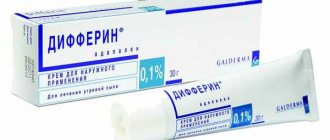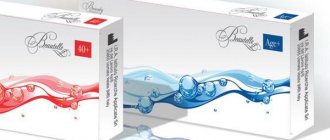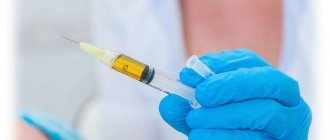- Find and arrange in the form of footnotes links to authoritative sources that confirm what is written.
Wikimedia Foundation. 2010.
See what “Trichloroacetic acid” is in other dictionaries:
trichloroacetic acid - An organic substance often used to precipitate biological macromolecules (proteins and nucleic acids). [Arefyev V.A., Lisovenko L.A. English-Russian explanatory dictionary of genetic terms 1995 407 pp.] Topics genetics EN trichloracetic... ... Technical Translator's Guide
TRICHLOROACETIC ACID - Ac >Domestic veterinary drugs
Trichloroacetic acid - * trichloroacetic acid * trichloracetic ac >Genetics. encyclopedic Dictionary
trichloroacetic acid - trichloracetic ac >Molecular biology and genetics. Dictionary.
trichloroacetic acid - trichloracto rūgštis statusas T sritis chemija formulė CCl₃COOH atitikmenys: engl. trichloroacetic ac >Chemijos terminų aiškinamasis žodynas
Trichloroacetic acid - CCL3COOH, completely chlorine-substituted Acetic acid, see Chloroacetic acids ... Great Soviet Encyclopedia
Acetic acid - Acetic acid General Systematic name acetic acid Chemical formula ... Wikipedia
TRICHLOROACETIC ACID - (trichloracetic ac >Explanatory Dictionary of Medicine
Ethanoic acid - Acetic acid General Systematic name acetic acid Chemical formula ... Wikipedia
Trichloroacetic acid is a substance obtained from the synthesis of chlorine and acetic acid. It has a cauterizing effect upon contact with the epidermis. Widely used in cosmetology as a chemical peeling agent, as well as in dermatology for the treatment of warts, papillomas and keloid scars.
What is peeling?
To keep your skin looking well-groomed and healthy, it is extremely important to organize proper care. One of the necessary and popular procedures is peeling, during which all dead cells and impurities are removed from the surface skin. Using conventional washing products (foams, scrubs, gels), it is impossible to achieve such an amazing result.
Cosmetic manipulation can also be carried out at home. In this case, natural non-aggressive components are usually used. This procedure helps maintain a healthy appearance of the skin on the face, but does not provide deep cleansing.
To eliminate cosmetic defects, you should resort to chemical peelings. It is recommended to carry out the procedure in a cosmetologist's office. The specialist will select the necessary components and their concentration for gentle cleansing of the facial skin.
Types of peeling
Many experts call peeling the secret of youth. The type of procedure is selected depending on the needs of the epidermis and age. Superficial peeling is suitable for all skin types. It allows you to eliminate dead skin cells and cleanse pores.
Medium peeling provides deeper cleansing. It is recommended to do it in the presence of age-related and pronounced facial wrinkles. After just one session, there will be a noticeable improvement in skin condition. The procedure is in great demand in beauty salons. Trichloroacetic acid is usually used as the active ingredient. The properties and mechanism of action of this substance will be described in detail below.
Deep peeling is a medical procedure and can only be performed by an experienced specialist. After such a procedure, the epidermis needs long-term recovery, proper nutrition and hydration. The cost of the procedure differs significantly from previous ones.
Conservative treatment of lesions caused by human papillomavirus infection
The problem of treating genital viral infections is currently the most acute. Based on the biology of viruses, these infections are the most difficult to epidemiologically control and treat. Among viral infections affecting the anogenital area, the most common are herpetic and human papillomavirus infections. The purpose of this article is to review modern conservative treatment methods for patients with anogenital lesions caused by the human papillomavirus (HPV lesions).
HPV lesions include (according to J. Handley [1]): clinical forms - anogenital warts (genital warts, warts vulgaris), symptomatic intraepithelial neoplasia in the early stages in the absence of dysplasia (flat condylomas); subclinical forms - asymptomatic intraepithelial neoplasia in the absence of dysplasia; latent forms (lack of morphological or histological changes when HPV DNA is detected).
Fundamentally, treatment of anogenital HPV lesions is aimed either at destroying papillomatous lesions by one method or another, or at stimulating an antiviral immune response, or at a combination of these approaches. The following classification of methods for treating anogenital warts seems optimal.
I. Destructive methods
- Physical:
1) surgical excision; 2) electrosurgical methods; 3) cryotherapy; 4) laser therapy.
- Chemical:
1) nitric acid;
2) trichloroacetic acid; 3) solcoderm. II. Cytotoxic drugs:
- podophyllin (PF);
- podophyllotoxin (PFT);
- 5-fluorouracil.
III. Immunological methods:
- α-, β- and γ-interferon
IV. Combined methods:
- combined use of various methods
When choosing the optimal treatment tactics, the doctor is increasingly forced to take into account the opinion of representatives of insurance medicine, both in its mandatory and voluntary versions, since payment for diagnosis and treatment depends on the standards that are taken into account by insurance companies.
In this regard, reference manuals, which present official treatment tactics approved by the Ministry of Health, acquire a special role. Today, one of the most authoritative reference publications of this type is the “Federal Guidelines for the Use of Medicines” (FR), the latest, 4th edition of which dates back to 2003. Unfortunately, this reference book does not yet contain a section devoted to the treatment of human papillomavirus infection. Such information will apparently be present in Russian standards for the treatment of STIs, but they have not yet been published. The only guidelines for practicing physicians working in this field may be various methodological materials produced by reputable institutions and organizations. Such manuals include “Methodological materials on the diagnosis and treatment of the most common sexually transmitted infections (STIs) and skin diseases”, published by the Central Scientific Research Institute of Medical Sciences in 2001 and “Methodological materials on the diagnosis and treatment of the most common sexually transmitted infections (STIs), and associated diseases" of the Russian Association of Obstetricians and Gynecologists, approved in 2000. These guidelines for the treatment of HPV lesions recommend physical and chemical destructive methods, the use of podophyllotoxin, as well as combined methods based on the combination of destruction of lesions with systemic and local immunotherapy.
In addition to the mentioned guidelines, when choosing the most optimal method in each specific case, the doctor must be guided by four main characteristics:
- effectiveness for this pathology;
- relapse rate after treatment;
- tolerability (minimal side effects);
- simplicity of procedures.
Physical destructive methods
The main difference between these methods and others is that when they are used, rapid, usually instantaneous destruction of the lesions occurs. With other methods, the lesion is exposed, and it takes time - from several hours to several weeks - for the lesions to be eliminated. As a rule, this period is comparable to the healing time of lesions after exposure to physical methods. The frequency of relapses, according to the literature, does not depend on the choice of treatment method. Thus, the seemingly obvious advantages of physical methods are leveled out. To use physical destructive methods, special premises, expensive equipment, and trained personnel with certificates for this type of medical activity are required. All this limits the use of these types of treatment in widespread practice, especially in small medical centers or in areas where there are only dermatovenerological, gynecological or urological offices in the clinic. Therefore, conservative treatment methods that are available for use by any practitioner are of particular interest.
Chemical destructive methods
Concentrated solutions of acids, alkalis, salts, etc. are used. Among such preparations one can mention Feresol, hydrogen peroxide, solutions of quinacrine and hingamine, preparations based on salicylic and lactic acids, acetic and nitric acid, thuja and celandine juices. All these drugs have low, poorly predictable effectiveness, and numerous side effects. There is little consistent data regarding the effectiveness of these drugs. Among the chemicals used in our country and abroad that have a destructive effect, about which there is sufficient data in the literature, one can highlight trichloroacetic acid (TCA) and nitric acid, as well as a combined acid preparation - solcoderm.
Trichloroacetic and nitric acids
TCA acid is used in a concentration of 80-90% and causes the formation of local coagulative necrosis. A solution of nitric acid has the same effect. Due to its cheapness and availability, the method is used quite widely. Acids are effective for the treatment of condylomas of the vulva, foreskin, coronary sulcus and glans penis, especially in cases where the use of cytotoxic methods and laser is contraindicated (for example, during pregnancy). The drugs are not generally recommended for the treatment of vaginal and urethral warts. Cauterization is carried out once a week for five to six weeks. The effectiveness of TCA and nitric acids is approximately 70–80%. In 1/3 of patients, a local reaction in the form of weeping and ulceration may develop.
Solcoderm
Solcoderm is an aqueous solution, the active components of which are the products of the interaction of organic acids (acetic, oxalic and lactic) and metal ions with nitric acid.
The properties and mechanism of action of solcoderm presented below distinguish it from other destructive methods: when applied topically, solcoderm causes immediate intravital fixation of the tissue to which it is applied; the effect of the drug is strictly limited to the place of application; a sign of an immediate effect is a change in the color of the treated area; devitalized tissue dries out and darkens (mummifies); The “mummified” scab is rejected on its own; The healing process is short and complications (secondary infection or scarring) are rare. The treatment is practically painless and is carried out on an outpatient basis, as it does not require special equipment.
Solcoderm is highly effective for the treatment of genital warts of any location; in most cases, a single application is sufficient.
Cytotoxic drugs
Podophyllin
PF is a resin obtained from the plants P. pelatum and P. emodi, found in North America and the Himalayas. To treat warts of the anogenital area, a 10-25% solution of PF in ethanol or benzoin tincture is used. PF is the drug of choice in UK clinics. It binds to the microtubule apparatus of the cell and inhibits mitosis, and also inhibits the transport of nucleic acids, resulting in inhibition of DNA synthesis and cell reproduction. The PF is not registered in Russia. Not all researchers welcome the use of PF, especially its self-administration by patients. In particular, Pedersen et al. characterize PF as a poorly studied, roughly purified plant extract. Using liquid chromatography, these authors determined that approximately 10% of the dry matter of a 20% PF solution consists of two mutagenic flavonoids - quercetin and kaemferol. It is proposed to use only highly purified podophyllins, and even then their independent use is recommended for patients only after detailed instructions.
Podophyllotoxin
Podophyllotoxin is the most therapeutically active fraction of podophyllin. In other countries it is available in the form of solutions of 0.25%, 0.3% and 0.5%, as well as in the form of cream 0.15%, 0.3% and 0.5%. Podophyllotoxin solution and cream are registered in Russia. Its undoubted advantage is the possibility of safe independent use by patients. It is usually used twice daily for three consecutive days a week for four to five weeks.
For PFT, the effectiveness rate is 26-87% in men and 50-77% in women. Such a large scatter in the effectiveness indicator is associated with different periods of observation of patients, as well as with the fact that in some studies the authors do not take into account relapses. According to Hendley, complete disappearance of warts is observed only in 30-40% of cases, according to Bonnez - in only 29% of patients, according to Wang - in 86.5%, according to Kinghorn et al. - in 86% of men and 72% of women. According to Syed, relapses are observed in 5.5% of cases when using a solution of 0.3% and cream and in 51% when using creams of 0.3% or 0.5%, according to von Krogh, when using a solution of 0.5 % - in 38% of cases, according to Wang - in 17% of patients, according to Hellberg - in 23% (using 0.5% cream).
The most common side effects of PFT are local inflammatory reactions (in 57% of patients), erythema, burning (in 48%), pain (in 47%), itching (in 44%), slight weeping and erosion in the area of application (in 39% ). Although no systemic side effects have been reported, it is recommended to limit the use of PFT to 0.2 ml per treatment.
Handley considers PFT the drug of choice for self-administration in patients with a small number of non-keratinizing condylomas located on the foreskin, glans penis, coronary sulcus and vulva. The drug is ineffective in the treatment of warts of the perianal area, vagina and urethra.
The disadvantages of PFT are its high cost, long duration of treatment and not the highest effectiveness.
5-fluorouracil
5-fluorouracil (5-FU) is a pyrimidine antagonist and is capable of interfering with the synthesis of both cellular and viral DNA. For the treatment of warts of the anogenital area, it is prescribed in the form of a 5% cream. According to Handley, 5-FU is an effective treatment for intravaginal warts and condylomas of the terminal urethra. When treating intravaginal warts, the drug is prescribed once at night for a week or once a week for 10 weeks. Although the drug with this treatment regimen has a fairly high effectiveness (85-90%), its use may cause weeping erosions on the vaginal mucosa, up to the development of severe weeping contact dermatitis.
When treating warts of the terminal part of the urethra, the cream is administered immediately after urination, at night, for three to eight days. Complete cure of intraurethral warts is observed in 90-95% of men. However, just as in the case of women, when treating men, many side effects are observed: stenosis and stricture of the urethra, dysuria, ulceration.
Despite the fairly high effectiveness of 5-FU, its availability and low cost, its use is limited in widespread practice due to the high frequency of side effects. The drug is contraindicated during pregnancy.
One of the main indicators of the effectiveness of any method is the absence of relapses. Since the frequency of relapses of HPV infection does not depend on the method of destruction of lesions (physical, chemical or cytotoxic), another group of conservative methods is of interest - therapy with immune drugs, which can be used alone or in combination with destructive methods.
Immunological methods
Interferons (IF)
Since HPV persists in epithelial cells and the use of destructive methods does not guarantee against relapses, the use of interferons both as monotherapy and in combination with other treatment methods is promising in this regard.
IFs are endogenous cytokines that have antiviral, antiproliferative and immunomodulatory effects. There are three main classes of interferons: α-IF (leukocyte), β-IF (fibroblastic) and γ-IF (T-lymphocyte). IF can be used locally, intralesional and systemically (subcutaneously, intramuscularly or intravenously). It has been established that when IF is used in patients, the amount of viral DNA in the lesions decreases (according to PCR data), which correlates with clinical improvement or disappearance of the lesions.
Most studies have shown low effectiveness of external use of IF. Some authors believe that an important indication for the external use of IF is the presence of subclinical foci of HPV infection and cervical intraepithelial neoplasia (CVN), especially caused by HPV types of high oncogenic risk.
According to various authors, with systemic use of α-IF in a dose of 1.5 to 3 million IU intramuscularly or subcutaneously every other day for four weeks, complete disappearance of warts is observed in 11-100% of patients.
Among the side effects with systemic use of IF, flu-like phenomena are usually observed, the severity of which depends on the dose received. These side effects can be reduced by taking non-steroidal anti-inflammatory drugs.
Considering that the effectiveness of systemic monotherapy for IF is still not very predictable and not very high, and also taking into account the high cost of such treatment, this method is not widely used in clinical practice.
According to various authors, intralesional use of α- and β-IF is most effective. This method of therapy leads to the disappearance of 35-62.5% of warts, both exposed and unexposed. There are reports of a fairly high effectiveness of intralesional use of α-IF in the treatment of flat genital warts resistant to therapy (PF, electrocautery, liquid nitrogen, laser): it was used in a dose of 1 million IU intralesional - complete cure in 78% of patients (with control after four months ).
The Russian market today offers a wide selection of interferons from various manufacturers, both domestic and foreign - viferon, kipferon, reaferon, roferon-A, intron A, realdiron, etc. Today it is preferable to use recombinant rather than human interferons.
There are reports of the effective use of IF inducers as monotherapy. Of interest is the local use of a low molecular weight derivative of imiquidazoquinolinamine, imiquimod, which is an inducer of cytokines and, in particular, α-IF. It is used in the form of a 5% cream three times a week or daily at night until the rash disappears completely (but not more than four months). Complete disappearance of condylomas is observed in 56% of patients with the first dosing regimen and in 71% with daily use (placebo - 14%), and taking into account cases where it was possible to achieve regression of rashes by more than 50%, treatment can be considered successful in 81- 93% of patients. During follow-up examinations carried out within one year, relapses were observed in only 13-19%. With daily use, local side effects more often developed: redness, swelling, erosion. The cream is especially interesting in the treatment of subclinical HPV infection. Imiquimod has not yet been registered in Russia.
Combined methods
More preferable is the use of IF or its inducers, as well as other activators of antiviral immunity, as adjuvant therapy in combination with various destructive methods. Immune drugs increase the effectiveness of treatment and reduce the frequency of relapses. Combination immunotherapy is of particular importance in the treatment of stubborn, difficult-to-treat warts. Various methods have been proposed for treatment, based on the use of immune drugs in combination with cryotherapy, laser therapy, electrocoagulation, solcoderm, etc.
For example, it was found that the combination of IF with laser therapy is more effective than laser therapy alone: complete disappearance of warts is observed in 52–81.5% and 19–61% of patients, respectively. CO2 laser excision in combination with therapy with low doses of α-IF (1-3 million IU per day for five to seven days, then a break of three to four weeks, such as three to four cycles) increases the effectiveness of treatment and reduces the percentage of relapses observed after the use of laser therapy only. For small genital warts, supplementing laser therapy or electrocoagulation with local application of a gel containing β-IF 0.1 million IU/g five times a day for four weeks effectively prevents relapses.
However, according to The Condylomata International Collaborative Study Group, the use of α-IF (three times a week for four weeks) after removing all visible condylomas with a CO2 laser does not produce any positive results compared to placebo (complete cure in 18% , relapses in 35% of patients). According to MR Hopel et al., the combination of α-IF (3-6 five-day courses with an interval of two weeks) with destructive and/or surgical methods, despite increasing the effectiveness of treatment of persistent, treatment-resistant condylomas, does not prevent the development of relapses (they occur in 50% of patients).
When treating anal condylomas, it is proposed to first surgically remove large formations, then cauterize the lesions with electric current and one injection of α-IF in a dose of 500 thousand IU into the rectum. The use of IF in this way reduces the number of relapses (12% with the use of IF, 39% without IF).
It is possible to increase the effectiveness of treatment by influencing antiviral immunity through the use of inducers of endogenous interferon and other immune activators. The Russian pharmacy market offers many interferon inducers, mainly from domestic manufacturers; the most well-known of them - Gepon, Ridostin, Cycloferon, Neovir - when used systemically and/or locally, can increase the effectiveness of treatment, affecting the frequency of relapses. For example, applications of Gepon to areas of HPV lesions after their removal by some destructive method (three to six applications every other day) can speed up the healing process and reduce the rate of recurrence.
The use of an antiviral immunity activator, Immunomax, is interesting and promising. It can be used for recurrent genital warts in combination with any of the destructive methods. Patients have genital warts removed and at the same time given intramuscular injections of Immunomax 200 units. once a day on the 1st, 2nd, 3rd, 8th, 9th and 10th days of treatment. The absence of recurrence of condylomas immediately after treatment is observed in 68% of patients; after additional sessions of destruction, the effectiveness of treatment reaches 98% (with a follow-up of at least three months). Today in the literature it is very rare to find works whose authors would pay attention to the isolation of human papillomavirus (HPV) from lesions before and after treatment. An interesting fact is the disappearance of HPV from lesions during Immunomax therapy. Immediately after treatment, the number of patients with a sharply positive DNA test result for HPV is reduced by one and a half to two times, both for viruses with a high risk of oncogenicity (from 48.9 to 21.3%) and for low risk (from 48.9 to 21.3%). 34%). By the end of the observation period, viruses with a high risk of oncogenicity were detected in 19.2% of patients (only weakly positive results), before treatment - in 63.8%. Viruses with a low risk of oncogenicity are isolated in 25.6% (before treatment in 61.9%). The results obtained show the possibility of using Immunomax as monotherapy for asymptomatic virus carriers. This is especially true for women who, if they have HPV, have an increased risk of developing cervical dysplasia and cervical cancer. When treating dysplasia with one of the destructive methods that lead to the elimination of only clinical and subclinical changes, you can try to achieve the disappearance of HPV from the genital tract by adding Immunomax to the course of standard therapy.
Combined methods of therapy, based on the combination of destruction of visible lesions with the administration of antiviral immunity activators (interferons, their inducers, Immunomax), most meet the criteria for choosing the optimal treatment method - high efficiency and low relapse rate.
Thus, there are many different conservative methods for removing anogenital warts. The effectiveness of the methods, according to different authors, varies from 50% to 94%. None of the treatment methods can be considered a panacea, since the relapse rate, which is a very important indicator of any method, is quite high with any treatment method. The doctor chooses therapy depending on the surrounding circumstances, including the wishes of the patient himself. Treatment must be individual: in each specific case it is necessary to select the most optimal method. The problem of relapse does not depend on the choice of therapy. The relapse rate averages 25-30% within three months after treatment. Recurrences of anogenital warts are most often associated with reactivation of the infection, rather than with reinfection from a sexual partner. In the absence of treatment, there are three options for the development of events: warts can resolve on their own, remain unchanged, or progress. At the same time, one must always take into account the possibility of persistence of the virus in the absence of any clinical manifestations.
When treating anogenital warts, in addition to removing the lesions themselves, the following important tasks should be solved:
- identification and treatment of other STIs in patients with anogenital warts (and their sexual partners);
- screening all women with warts of the anogenital area for CVI;
- monitoring identified foci of CVI in the early stages in order to timely detect their progression and transition to a malignant form;
- active treatment of anogenital warts, neoplasia in the early stages, occurring with a detailed clinical picture, neoplasia in the later stages and squamous cell carcinoma;
- recommendations to patients on the use of condoms and limiting casual sexual contacts to prevent infection (and reinfection) with HPV and other STIs.
A. M. Solovyov, Candidate of Medical Sciences, Moscow State Medical University, Moscow
Trichloroacetic acid
TCA peeling is a cosmetic procedure that involves the use of trichloroacetic acid in varying concentrations. The active aggressive substance is organic and dissolves well in water. The composition of the component allows you to clean the middle layers of the epidermis.
Trichloroacetic acid is used in cosmetology due to the presence of many beneficial properties:
- removes dead particles from the surface layer of the skin;
- eliminates inflammation and kills pathogenic bacteria;
- normalizes sebum production;
- tightens pores;
- stimulates metabolic processes, affecting blood capillaries;
- eliminates pigmentation, whitens the skin.
TRICHLOROACETIC ACID UN No. 1839 (UN1839)
Home > About the enterprise > Technical information > Directory of chemical substances
TRICHLOROACETIC ACID UN No. 1839 (UN1839) - hazard class, transport by tank trucks
- Production
- Technologies
- History of the plant
- News
- Photo gallery
- Articles
- Career
- FAQ
- Technical information
- Document flow
| 1. | Identification of chemical products | |
| 1.1. | Identification of chemical products | |
| 1.1.1. | Technical name: | TRICHLOROACETIC ACID |
| 1.1.2 | Brief recommendations for use (including restrictions on use): | TRICHLOROACETIC ACID is used in chemical synthesis, chromatography, as a differentiating solvent, in cosmetics as a chemical peeling agent, and is widely used in biochemistry for the precipitation of macromolecules such as proteins, DNA and RNA. |
| 2. | Identification of hazard(s) | |
| 2.1 | The degree of danger of chemical products in general: | Hazard class (according to GOST 12.1.007-76) - 3 |
| 2.2. | Hygienic standards for products in general in the air of the working area: (MPCr.z. or OBUV r.z.) | 5 mg/m3 |
| 2.3. | Information about marking (according to GOST 31340-13) | |
| 2.3.1. | Hazard description: | Symbols: “Liquid pouring out of two test tubes and hitting metal and hand,” “Dry wood and dead fish.” Signal word: "Danger." Hazard Statements: May be corrosive to metals. Harmful in contact with skin and if swallowed. Causes severe burns. Irritating to eyes, respiratory system and skin. Dangerous for the environment. |
| 3. | Information during transportation (transportation) | |
| 3.1 | UN Number: (according to UN Recommendations on the Transport of Dangerous Goods (Model Regulations), latest edition) | UN number 1839 |
| 3.2 | Proper shipping name and/or shipping name: | TRICHLOROACETIC ACID |
| 3.3 | Types of vehicles used: | The drug is transported by all modes of transport in accordance with the cargo transportation rules in force for this type of transport. |
| 3.4 | Classification of cargo hazards: (according to GOST 19433 and UN recommendations for the transport of dangerous goods) | According to GOST 19433-88 - class 8 classification code 8011 According to the recommendations of the UN, SMGS, RID - class 8 classification code C4 |
| 3.5 | Transport markings: (handling signs; main, additional and informational inscriptions) | Danger sign in accordance with GOST 19433 according to drawing No. 8. Transport marking in accordance with GOST 14192 with the application of a handling sign “Downhill carefully” for a substance in a glass container, “Sealed packaging” |
| 3.6 | Packing group: (in accordance with UN recommendations on the transport of dangerous goods) | II |
| 3.7 | Emergency cards: (for rail, sea and other transportation) | |
| For rail transportation, emergency card No. 803. | ||
| 3.8 | Information about the dangers in international cargo traffic: (according to SMGS, ADR (ADR), RID (RID), IMDG Code (IMOG), ICAO/IATA (ICAO), etc., including information about the danger to the environment, incl. . about “sea polluters”) | SMGS danger code - 80 |
| 4. | Rules for storing chemical products and handling them during loading and unloading operations | |
| 4.1 | Safety precautions when handling chemical products | |
| 4.1.1 | Safety measures and collective means of protection: (including a system of fire and explosion safety measures) | When working, it is necessary to use special clothing, personal protective equipment in accordance with GOST 12.4.011 and observe the rules of personal hygiene. The premises in which work is carried out must be equipped with supply and exhaust ventilation in accordance with GOST 12.4.021. For chemical exploration and work supervisor - PDU-3 (within 20 minutes). For emergency crews - an insulating protective suit KIKH-5 complete with an insulating gas mask IP-4M or a breathing apparatus ASV-2. In case of fire - a fireproof suit complete with self-rescuer SPI-20. In the absence of the specified samples: a protective combined arms suit L-1 or L-2 complete with an industrial gas mask and B6, BKF cartridges. For low concentrations in the air (exceeding the maximum permissible concentration up to 100 times) - special clothing, a small-sized industrial gas mask PFM-1 with a universal protective cartridge ROM, an autonomous personal protective kit with forced supply of purified air to the breathing zone. Acid-resistant gloves, butyl rubber dispersion gloves, special shoes. |
| 4.1.2 | Environmental protection measures: | Maximum sealing of process equipment must be ensured. To isolate vapors, use sprayed water. Pump out the substance from depressions in the area, taking precautions. Cut off the surface layer of contaminated soil, collect it and remove it for disposal. Cover the cut areas with a fresh layer of soil. Rinse with water for control (provocative) purposes. Isolate the spill and scattering area with sand, air-mechanical foam and prevent the substance from entering surface waters. Cover spills and spills with powders containing an alkaline component (limestone, dolomite, soda, lime). Rinse off with plenty of water from as far away as possible. Wash the surfaces of the rolling stock with plenty of water, detergent compositions, and a weak alkaline solution (milk of lime, soda ash solution). |
| 4.1.3 | Recommendations for safe movement and transportation: | Transported in closed containers in compartments for flammable chemicals. Moisture and temperature rise are not allowed. Packing Instruction P002 IBC08 Special packing provisions B4 Mixed packing provisions MP10 Special packing provisions W11 Transport category 2 |
| 4.2 | Rules for storing chemical products | |
| 4.2.1 | Conditions and terms of safe storage: (including guaranteed storage period, expiration date) | Solid acid is stored in a dry reagent warehouse in the flammable substances compartment in a dry, dark, cool place; liquid - in the GZh warehouse. Guaranteed shelf life - 3 years, in liquid form - 12 months. |
| 4.2.2 | Substances and materials incompatible during storage: | Joint storage with organic substances, flammable and combustible substances, and inorganic substances with oxidizing properties is not allowed. |
| 4.2.3 | Materials recommended for containers and packaging: | Closed containers. |
| 4.3 | Safety measures and storage rules at home: | Not applicable |
| 5. | Recommendations for disposal of waste (residues) | |
| 5.1 | Safety measures when handling waste generated during use, storage, transportation, etc. | When handling waste, each worker is obliged to strictly observe personal safety measures, for which they should use personal protective equipment (RU-60 respirator with a brand A cartridge; safety glasses, rubber gloves; protective aprons). |
| 5.2 | Information on places and methods of neutralization, recycling or disposal of waste substances (materials), including containers (packaging): | Neutralization followed by disposal at special acid waste processing plants. |
| 5.3 | Recommendations for disposal of waste generated when using products in everyday life: | Not used in everyday life. |
Return to list
Indications for use
Trichloroacetic acid peeling is not suitable for everyone. Feedback from experts indicates the need for mandatory consultation before the procedure. Cosmetologists say that chemical facial cleansing is necessary only if there are severe age-related skin problems.
Indications for TCA peeling are:
- post-acne;
- hyperkeratosis;
- oily skin with enlarged pores and acne;
- scars on the skin of the face;
- strong pigmentation;
- wrinkles as a result of photoaging;
- loss of elasticity;
- pitting on the skin after chickenpox;
- expression lines in the eye area;
- stretch marks.
Why is peeling necessary?
There are various indications for it:
- age-related changes, wrinkles, dull skin color, photoaging;
- freckles, hyperpigmentation, age spots;
- excess oily skin, acne;
- preparation for various injection procedures, bioreinforcement, contouring;
- scarring.
The cleansing effect is achieved due to the presence of an active element in the peeling agent, which is called trichloroacetic acid. Its chemical properties are comparable to vinegar, can cause burns, and is toxic.
How does it work?
Peeling with trichloroacetic acid can cope with almost any cosmetic defects of the epidermis. First of all, the chemical cleanses the top layer of the skin, leaving it smooth and silky. Pores are noticeably reduced and oily shine is eliminated.
The procedure can significantly lighten pigmented areas. The active component leads to exfoliation of dead skin particles on the top layer, where freckles form. The procedure is recommended to be carried out in the cold season to avoid the aggressive effects of ultraviolet radiation and the reappearance of stains.
Trichloroacetic acid activates collagen production processes by dilating capillaries. This allows you to restore elasticity and firmness to the skin, eliminate wrinkles (facial and age-related).
Thanks to its antibacterial properties, the active substance fights well against inflammatory processes that occur in different layers of the epidermis.
Cleaning depth
For chemical cleansing of the skin, cosmetologists often use Skin Rebirth products. This Spanish company produces high-quality Easy TCA kits with different concentrations of the aggressive component.
A solution of trichloroacetic acid at 15% concentration has the most gentle effect. The product also contains fruit acids and saponins, which increase the penetrating ability of the active component. A weakly concentrated solution is used to exfoliate dead particles of the epidermis and improve appearance.
TCA-25 is a solution that must be used when performing a mid-peeling. The duration of exposure of such a product to the skin should not exceed 20 minutes. Otherwise, you may get burned. The composition of trichloroacetic acid is additionally enriched with amino acids. The active component penetrates the skin to the basement membrane, destroying damaged and old cells.
For significant skin rejuvenation, elimination of pronounced wrinkles and long-lasting effect, it is recommended to carry out deep chemical cleansing using 40% trichloroacetic acid. This is a rather painful procedure that not every cosmetologist can perform. Saponins and phytic acid help reduce the aggressive effects of the active substance. The components also accelerate the processes of restoration and regeneration of the epidermis.
Peeling kits
Trichloroacetic acid (instructions for the drug based on it are usually included in the package) is becoming increasingly common. The Skin Rebirth – Easy TCA kits are deservedly popular. They are recommended for the treatment of acne, skin photoaging, superficial fine wrinkles, and hyperpigmentation.
Easy TCA is considered the safest and simplest peeling based on trichloroacetic acid. Due to this, this product can be used both in professional cosmetic clinics and at home. Does not require lengthy and complex pre-peeling preparation. Suitable for any phototype. Can be applied to the face, hands, neck, forearms and chest.
The set consists of a main solution, a post-peeling mask and a solution of trichloroacetic acid (50%).
The main solution contains vitamins, alpha hydroxy acids, saponins and antioxidants. Trichloroacetic acid (its structural formula was given in the article above) is added additionally to the solution to a concentration of 15%.
The components of the main solution promote deep and uniform penetration of the active substance into the epidermis, thereby minimizing the occurrence of side effects.
The mask included in the set also has a huge number of different beneficial properties. Helps to quickly regenerate the dermis after the procedure, reduces the risk of burns and swelling. The use of a post-peel mask allows for the absence of pre-peel preparation, thereby allowing you to fearlessly apply peeling to European, Mediterranean and Asian skin types. The post-peeling mask is rich in vitamins and also contains fatty acids.
Contraindications
Chemical peeling is a fairly serious procedure. Due to the fact that trichloroacetic acid has an aggressive effect on the skin, there are a number of contraindications to cleansing. It is prohibited to check the effectiveness of the method in the following cases:
- in the presence of endocrine pathologies;
- during pregnancy and lactation;
- in the presence of viral or bacterial diseases;
- with increased sensitivity of the dermis and a tendency to allergies;
- in the presence of fungal infections of the dermis;
- in case of violation of the integrity of the skin;
- with severe psychological disorders;
- with a tendency to form keloid scars;
- for oncological diseases.
The type of peeling is selected by a specialist and depends on the age category.
Result
As we found out, facial peeling with trichloroacetic acid can be done independently at home. The burning sensation after the procedure lasts a couple of minutes. The use of painkillers is not required.
The visible effect of this procedure can be seen in the 2nd week. The skin recovery period after peeling is 2 weeks. During this time, redness, discomfort and irritation may occur in the treated areas.
Preparation
During the process of chemical peeling, the skin is subjected to severe aggressive influence. To prevent the reagent from penetrating into the deep layers of the dermis and damaging them, it is necessary to carry out preliminary preparation. In some cases, it is recommended to start it a month before the cleansing procedure.
First of all, you should stop using scrubs and facial brushes (for several weeks). Cosmetologists also recommend preparatory glycolic peeling. This salon procedure involves cleansing the surface layer of the epidermis and activating metabolic processes in living cells. TCA peeling is applied evenly to clean, smooth skin, which ensures the same depth of action and penetration of the active components.
If you have spider veins, you need to take a course of vascular-strengthening drugs, for example “Rutina”. To prevent the appearance of herpes, it is recommended to start taking Acyclovir tablets 3 days before the procedure.
Immediately before the procedure, the specialist will cleanse the skin of impurities and cosmetics using a low-fat gel. After this, a composition containing trichloroacetic acid is applied.
The price of a TCA chemical peel depends on the concentration of the solution used, the need for pain relief, and the duration of aftercare. For a session with a cosmetologist you will have to pay from 5 to 15 thousand rubles. Further restorative care can be carried out at home.
Side effects
- Skin itching and redness.
- Burns.
- Edema, swelling of the skin.
- Severe flaking and flaking that continues for a week.
Basically, after the procedure, the recovery time reaches 2 weeks. The recovery period of the dermis depends on its type, as well as on the intensity of the procedure. At this time, you need to protect your skin from exposure to the sun's rays, avoid dehydration and chapping. You should not take hot baths, and you should also refrain from visiting a solarium or sauna. Every day you need to use softening and moisturizing creams.
Trichloroacetic acid (its formula is CCl₃COOH) can be used for peeling no more than twice a year. The price of a high-quality procedure performed in a specialized beauty salon is quite high. For example, the cost of mid-cleaning can reach 15,000 rubles. At the same time, cleansing the skin around the mouth or eyes will cost half as much.
The peeling effect can last from 6 months to 2 years. The duration of the effect can be secured by regular use of cosmetic care products.
